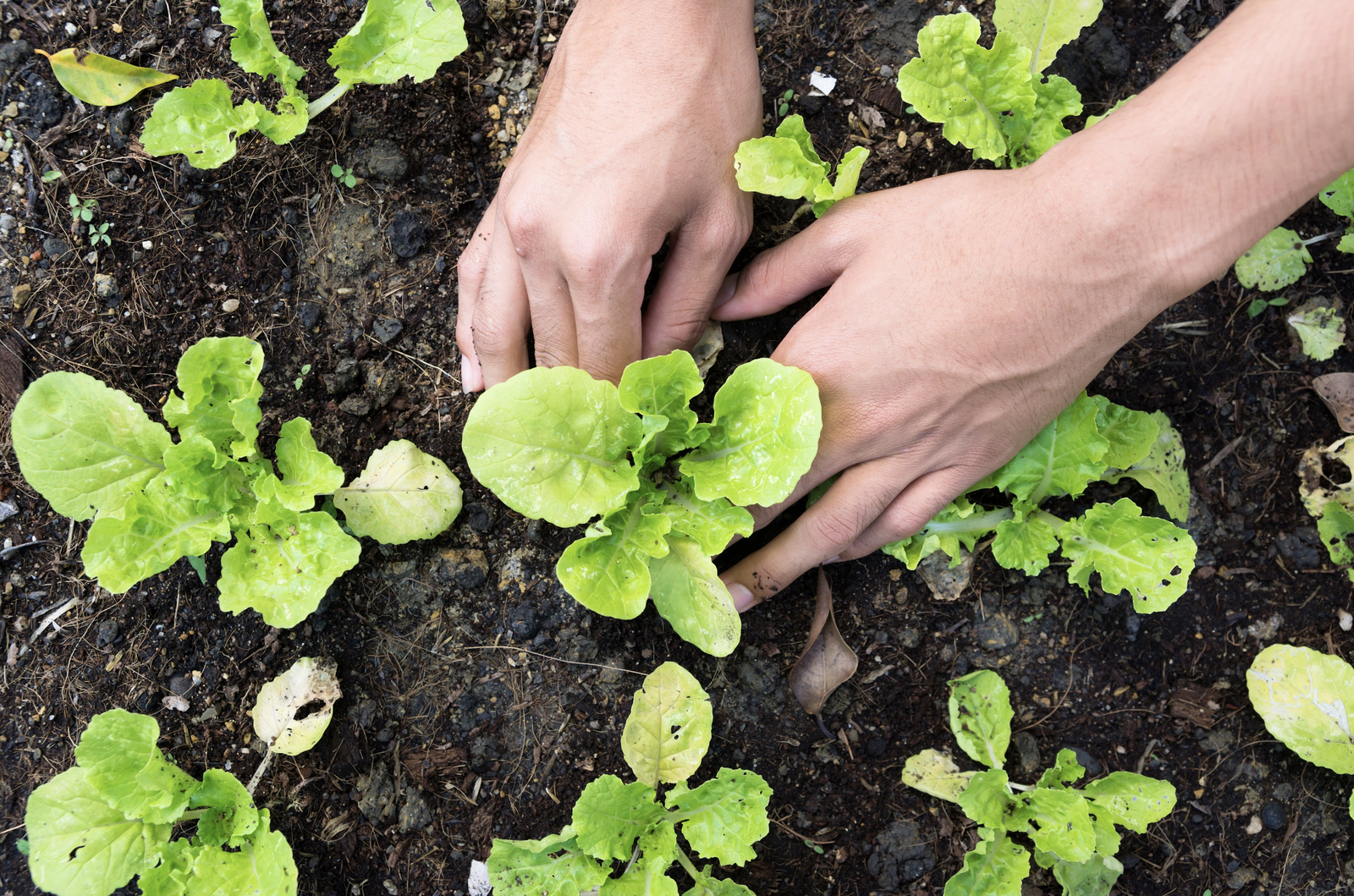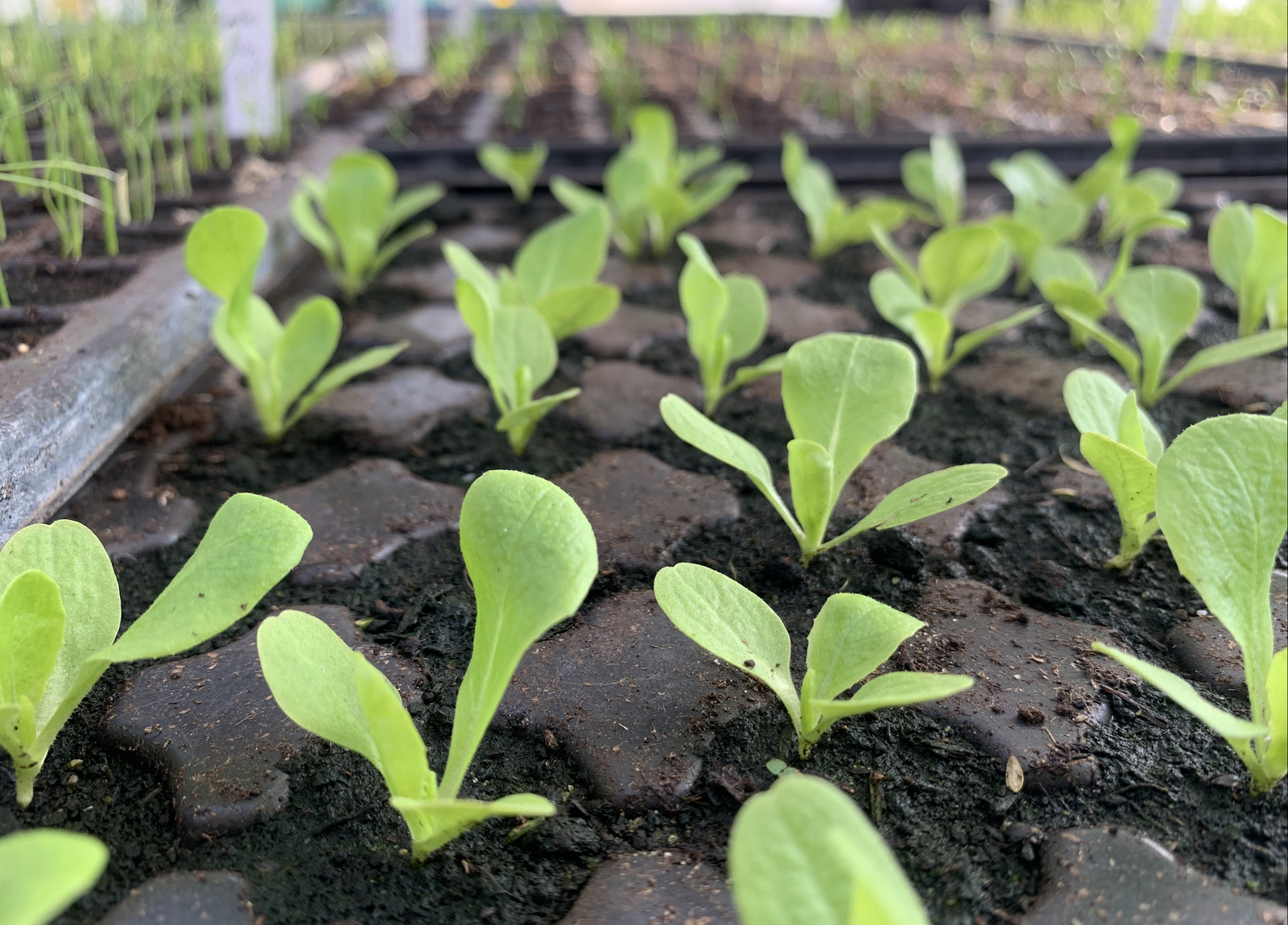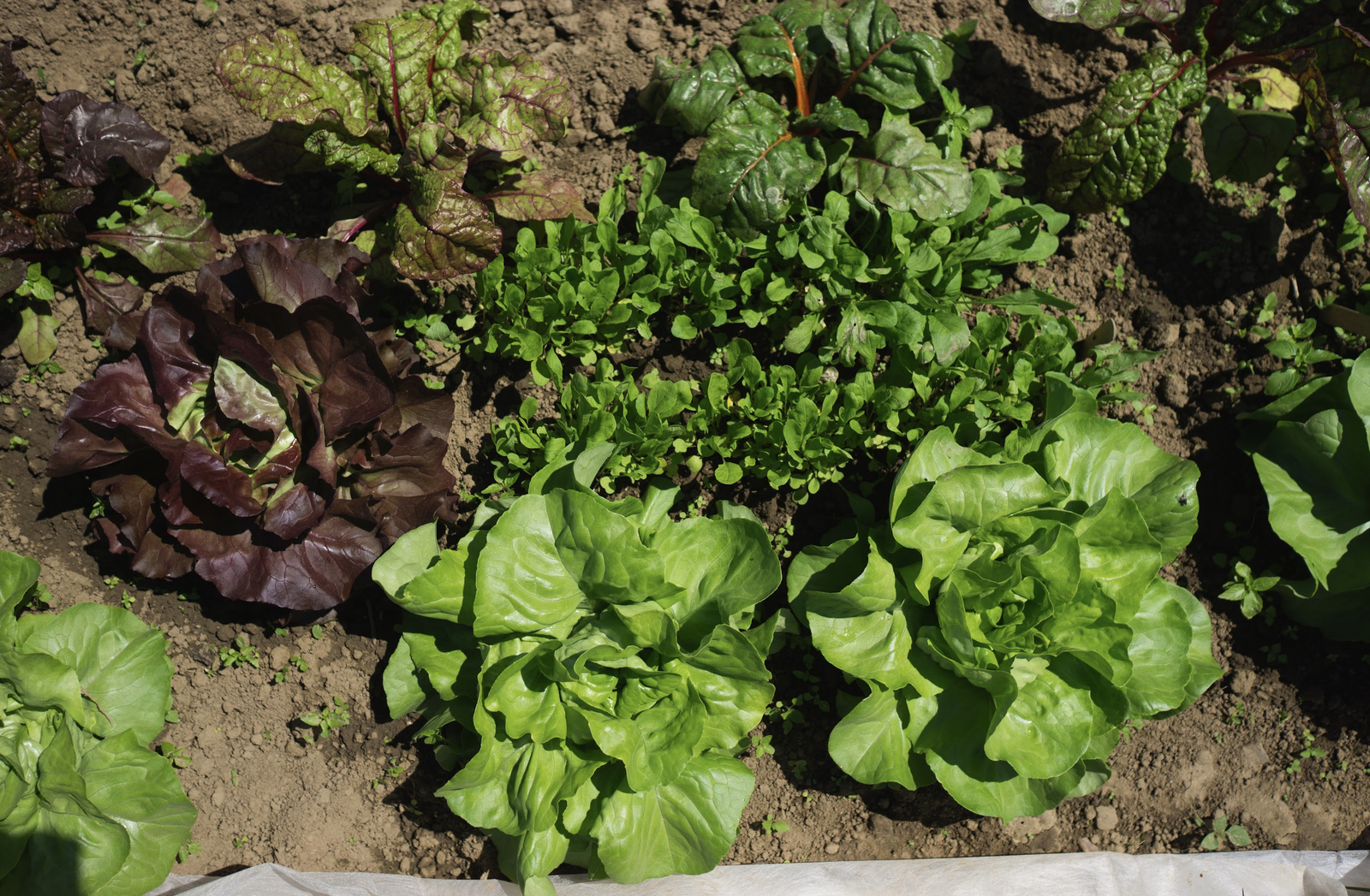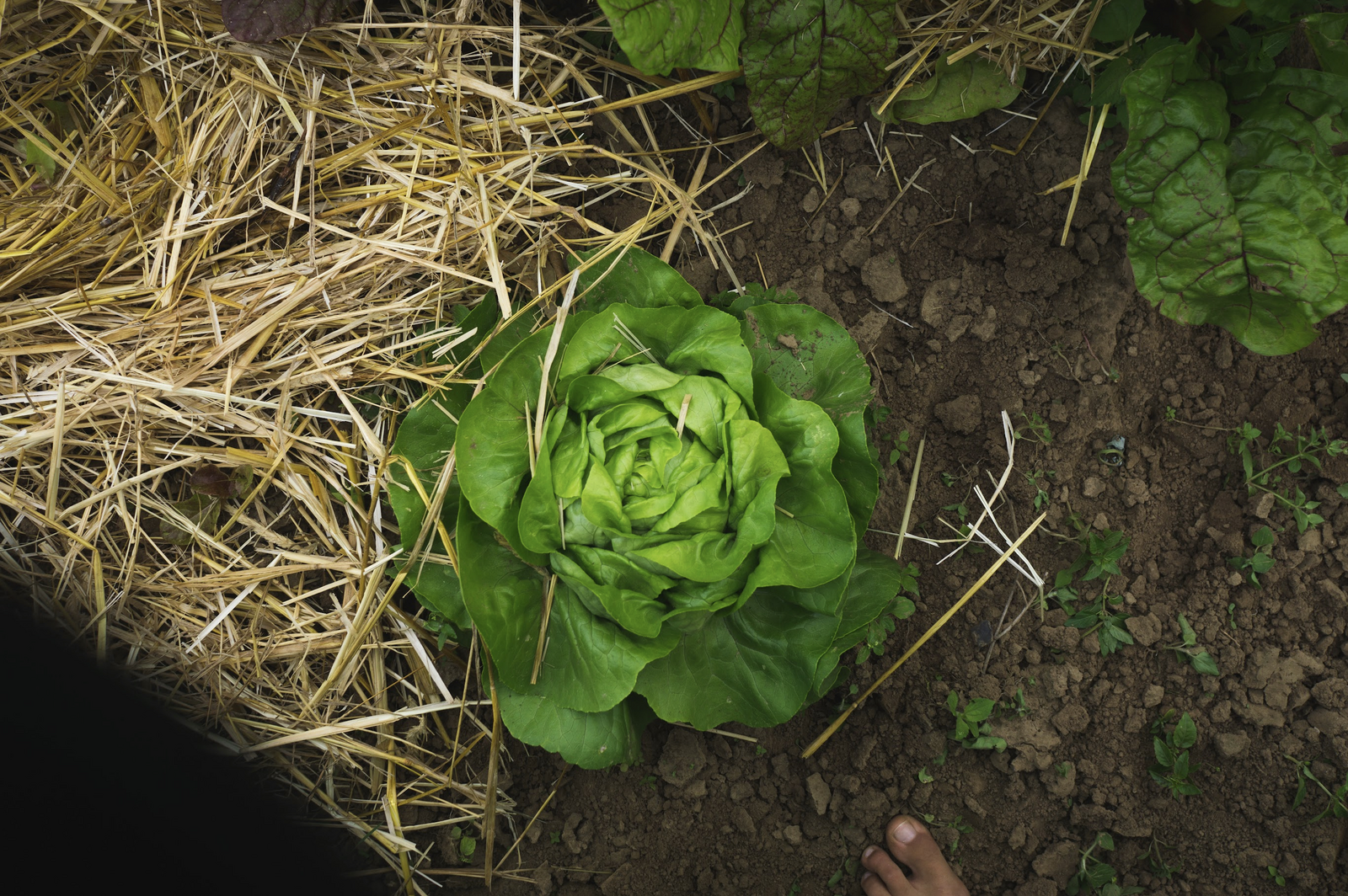
Planting, Sowing & Propagating Lettuce
Lettuce is a great vegetable for beginners - an easy-care crop with a quick harvest. There are numerous varieties of lettuce and you can sow lettuce all year round. Here you can find out what you need to bear in mind and whether direct sowing or pre-cultivation is more suitable. We also give tips on pricking out lettuce.
This Article Contains:
Quick Overview
Sowing Lettuce: Germination Period, Temperature and Sowing Depth
- Sowing depth: Light germinator, therefore only 0.5 - 1 cm/0.2 - 0.4 in deep sowing
- Germination temperature: 10 to 15 °/50 to 59 °F
- Germination time: 1 to 2 weeks
When to Preplant Lettuce or Sow Directly?
- Lettuce: Pre-breeding from February; direct sowing from March to April
- Batavia lettuce, pickerel lettuce, iceberg lettuce: pre-breeding from April, direct sowing from May to August
- Romaine lettuce: cultivation from April, direct sowing in the bed from May to June
- Endive: no pre-breeding, direct sowing from June to July
- Lamb's lettuce: no pre-breeding, direct sowing outdoors from July to October
When to Plant Lettuce?
- Most varieties that are grown in advance are planted out after the Ice Saints in mid-May
Sowing Lettuce: What You Need to Know
Lettuce is a light germinator, which you can recognize by the relatively small and delicate seeds. The seed size gives you an idea of how deep a seed is sown. It is obvious that the seedlings of these small seeds are unlikely to make it through a two to three centimeter layer of soil. Therefore, the sowing depth for lettuce seeds is about 0.5 - 1 cm/0.2 - 0.4 in. Place the seeds on the potting compost and sprinkle a thin layer of soil on top. Press the soil down gently and water carefully. It is best to use a spray bottle for watering to prevent the small seeds from being washed away.
The optimum germination temperature for lettuce seeds is between 10 and 15 °C/50 and 59 °F. The seedlings will sprout after 1 to 2 weeks. When the seedlings are about 3 cm/1.2 in tall and you can see the beginnings of the first leaves, you should prick out the lettuce seedlings. When direct sowing, the seeds are usually sown in large cubes and pricked out after emergence.
When to Sow Lettuce?

Lettuce comes in a wide range of varieties. Depending on the lettuce variety and sowing method, there are different sowing periods. Here is a list of some types of lettuce and their sowing dates. To harvest fresh lettuce all year round, you can combine and sow different types of lettuce.
| Salad Type | Cultivation | Planting Outdoors | Sowing |
|---|---|---|---|
| Batavia Lettuce | April | May | May - August |
| Iceberg Lettuce | April | May | May - August |
| Endive | - | - | June - Juli |
| Lamb's Lettuce | - | - | Mid-July - October (winter harvest)/ March - April (Spring harvest) |
| Lettuce | February | March | March - April |
| Picking Lettuce | April | May | May - August |
| Romaine Salad | April | May | May - Juni |
Lettuce - Preplanting or Direct Sowing?
Lettuce plants can usually be sown directly. When direct sown, the plants usually grow more stably and robustly. In addition, a direct-sown lettuce plant does not bolt as quickly. This means that the lettuce plant goes into flower, making its leaves inedible. If you grow lettuce in advance, the difference in temperature when planting out can encourage a rapid transition to flowering. Pre-planting lettuce also has advantages, however, as it gives the tender young lettuce plants a head start in growth. As young seedlings in the bed, they are otherwise helplessly exposed to birds and snails. When direct sowing, you should protect the lettuce seedlings at the beginning. You can read more about the Advantages and Disadvantages of Pre-cultivation and Direct Sowing here.

Preplanting Lettuce - What You Need to Consider
- Always keep the seeds well moist and spray once or twice a day. As light germinators, there is only a thin layer of soil over the lettuce seeds, which tends to dry out quickly.
- When growing on a windowsill, the ratio between heat and light must be right, otherwise the lettuce plants will go to seed. The seedlings should be kept at a maximum temperature of 15 °C/59 °F. This is very low compared to other crops that are often grown in advance. Therefore, look for a suitable place to grow lettuce, e.g. a heated or well-insulated greenhouse.
- Make sure there is enough light. It is best to use an additional plant lamp so that the young plants grow robust and stable straight away. Some lettuce varieties are grown relatively early in the year when the days are still dark and short.

Any Further Cuestions?
To exchange ideas with other gardeners and benefit from the experiences of others, you can visit our Fryd community. For sure someone has already planted lettuce and can give you some tips!
Join Community NowPlanting and Caring for Lettuce
When planting out lettuce, you should find a suitable location. Lettuce thrives best in loose, deep and humus-rich soil. It also doesn't need a lot of sun, which is why you can also grow lettuce in partial shade. There is not much you need to consider when planting out. Lettuce likes to be planted slightly elevated to protect its heart from rotting.
Lettuce is fairly uncomplicated to care for. As a light feeder, it does not need to be fertilized. This light feeder does not tolerate too much fertilization well anyway and too much nitrogen in lettuce can also be a problem for us gardeners, as harmful nitrates can accumulate in the leaves. You should also water sufficiently, otherwise the leaves will become hard. A layer of mulch prevents additional water loss through evaporation.

Pricking Salad
Pricking Out means that the young plants are separated. To do this, all the lettuce plants that are too close together are carefully grabbed by the head and gently pulled out of the soil. In the open field, plant 25 cm/9.8 in apart within the row and 40 cm/15.7 in apart between the rows. When pre-growing, you can separate each lettuce plant into its own small pot. The pre-breeding pots should not be too wide or too deep, otherwise mold can form quickly. A height of 8 cm/ 3 in is perfectly adequate.
I hope this has whetted your appetite for growing your own lettuce. If you have any questions or comments, please write to us at magazin@fryd.app.
Want to get helpful gardening tips all year round and plan your own beds in the best possible way? Then register here or download the Fryd app for Android or iOS.
Fryd - Your digital bed planner
Marie
Current Topics in the Community

#red , #tuesday

Liked 1 times
#testpostcount

Dec 2025
Popular Articles

Companion Plants for Carrots: What (Not) to Plant With Carrots

Companion Plants for Celery : What (Not) to Plant With Celery?

Strawberry Types: List of Best Strawberry Varieties

Companion Planting With Strawberries: Companion Plants and Planting Plan

Basil Varieties & Types at a Glance

What to Plant With Cabbage: Good and Bad Companion Plants

Fertilizing Strawberries: Home Remedies & Natural Fertilizers at a Glance

Growing Sweet Potatoes: Tips on Cultivation & Companion Plants

Companion Plants for Kitchen Herbs: Chives, Parsley & Co

What Herbs Can Be Planted Together?
FAQ
Head lettuce can be started indoors as early as February, while other varieties like lamb's lettuce can be sown directly outdoors from July to October.
How deep should lettuce seeds be sown?
Since lettuce needs light to germinate, it should be sown at a depth of 0.2 to 0.4 in/0.5 to 1 cm.
Is it better to start lettuce indoors or sow directly?
Direct sowing often times leads to more robust plants, while starting indoors gives the plants a head start.
What is the optimal germination temperature for lettuce?
Lettuce seeds germinate best at temperatures between 50°F and 59°F/10°C to 15°C.